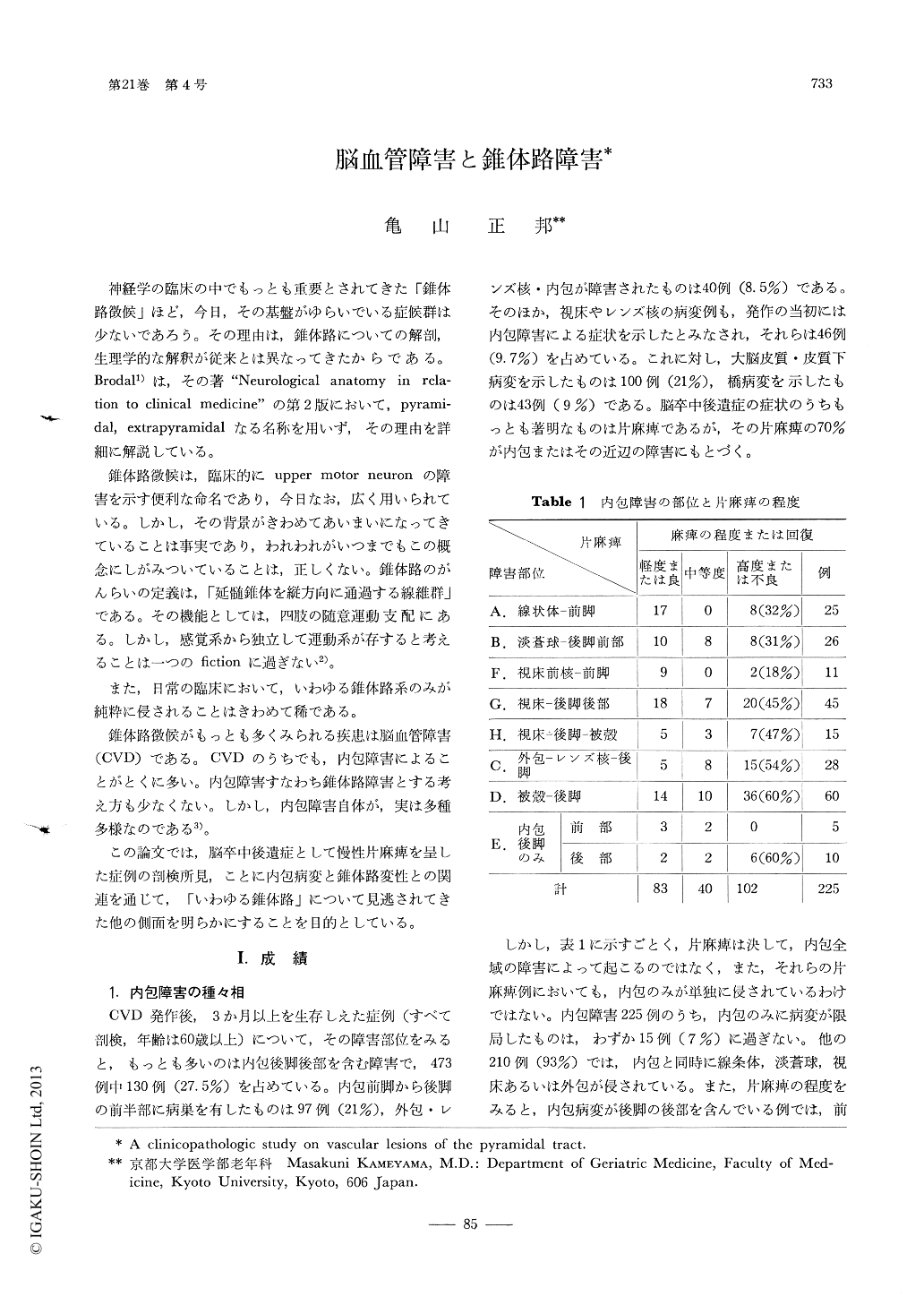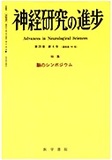Japanese
English
- 有料閲覧
- Abstract 文献概要
- 1ページ目 Look Inside
神経学の臨床の中でもっとも重要とされてきた「錐体路徴候」ほど,今日,その基盤がゆらいでいる症候群は少ないであろう。その理由は,錐体路についての解剖,生理学的な解釈が従来とは異なってきたからである。Brodal1)は,その著"Neurological anatomy in relation to clinical medicine"の第2版において,pyramidal,extrapyramidalなる名称を用いず,その理由を詳細に解説している。
錐体路徴候は,臨床的にupper motor neuronの障害を示す便利な命名であり,今日なお,広く用いられている。しかし,その背景がきわめてあいまいになってきていることは事実であり,われわれがいつまでもこの概念にしがみついていることは,正しくない。錐体路のがんらいの定義は,「延髄錐体を縦方向に通過する線維群」である。その機能としては,四肢の随意運動支配にある。しかし,感覚系から独立して運動系が存すると考えることは一つのfictionに過ぎない2)。
Anatomical and physiological studies have been changing the concept of "Pyramidal tract". The purpose of this study is to clarify hitherto unrecognized aspects of capsular lesions from a clinicopathologic standpoint. This study was performed on the routine autopsy series of the subjects aged sixty years or more who had shown hemiplegia due to vascular lesions in the internal capsule at the Yokufukai Geriatric Hospital, Tokyo. The brains and the spinal cords were extensively investigated with neuropathologial methods.

Copyright © 1977, Igaku-Shoin Ltd. All rights reserved.


